KD5ZLB Amateur Radio Station
Home -- Licensing
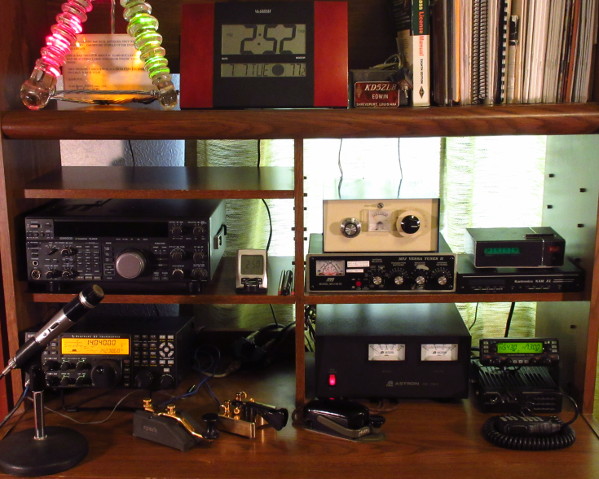
On the top shelf and to the left is a 'night light' I made from huge insulators used in WWII to support massive wire antenna arrays. It was once given as a gag gift by a dear ham friend, now a silent key, who took the time to inspire a fledgling ham (me) in the art of cw, his main operating mode and one I now thoroughly enjoy.
On the left, middle shelf is my first radio, a Kenwood TS-850s.
On the right, middle shelf and to the left is an MFJ-941E tuner which has been used to tune most of the antennas I've had. Above that tuner is my homebrew z-match tuner which is used now with the 80m loop and homebrew open wire feed. (Details are further down the page.)
Far right on the middle shelf is a Kantronics KAM XL TNC unit used for digital and aprs modes. On top of the TNC is the rotor control for my mini-horse 3-element 17m beam. (More about that down the page.)
On the bottom, left is the Elecraft K3, used for almost all radio work now. Standing near it is the Shure 545SD Unidyne III dynamic microphone.
To the right of the K3 is a Begali straight key, a Begali paddle, and a Czech straight key.
On the bottom right shelf is the Astron RS-35M power supply which powers various radios. To its right is an Icom 2720H VHF/UHF rig.

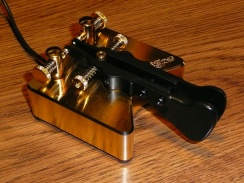
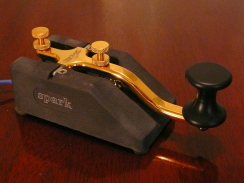
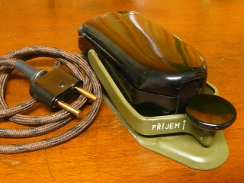
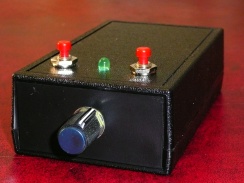
Top row and to the left is the Wilson's tea can/switch. In the middle is a Palm Mini Paddle, which slides back into its box for easy carrying and serves as a great portable paddle. Hinges mounted on the wooden base provide weight and serve as metal for the magnets in the base of the paddle. When portable, the paddle will adhere to the steel cabinet of the FT-857. The straight key is used mostly with the Drake TR-4. To the right is my favorite paddle, a Begali Simplex.
On the next row is one of the newest additions, a Begali Spark straight key, a delight to use. in the middle is a Czech Republic WWII vintage army military key. To the right is a keyer built from plans in the May 2004 QST, the Smart Keyer Lite. It will provide positive or negative keying and I use it with the Drake TR-4 since no keyer in that rig. It is also used with the qrp rigs needing a keyer.
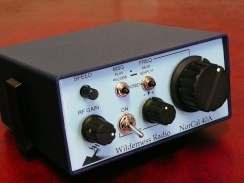
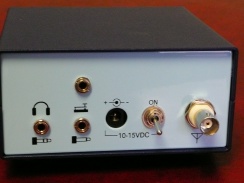

Above are closer views of the NorCal 40A qrp rig for 40 meters. On the rear panel is a second jack for a paddle, while the lower jack is for straight key.
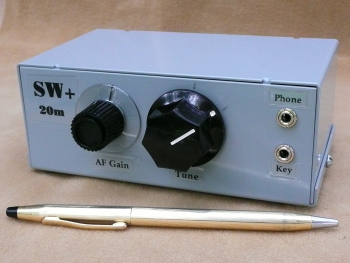
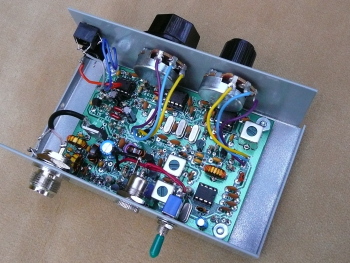
The latest edition to the qrp menagerie is Dave Benson's fine kit, the SW+ for 20 mtrs, from Small Wonder Labs.
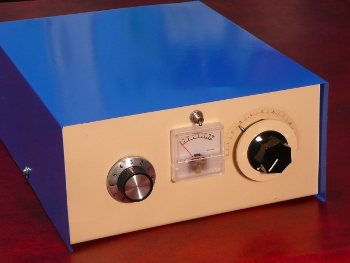
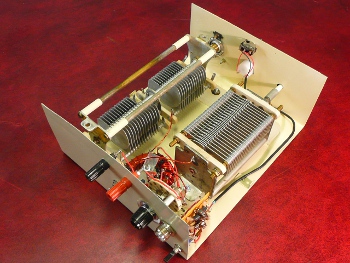
This is a homebrew z-match used on bands 80 through 6 meters. The right control is a vernier to enable precise tuning. A toroid bridge (in back right part of the cabinet) allows monitoring of forward or reflected power via a switch above the meter. The meter is switchable from low power (10w) to high power (100w). The antenna posts allows balanced line, but the tuner will accommodate unbalanced line (coax), although no separate input at this time, but could use the antenna posts.
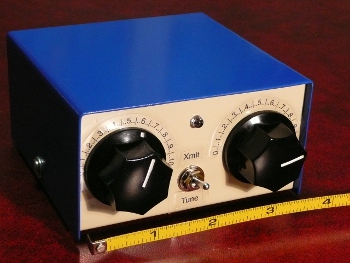

OK, guess this is homebrew z-match jr. It was designed to tune the 40m ef zepp used with qrp for camping, which it will tune on 40m - 15m. It also will tune an ef 40m half wave wire, as well as a twin-lead-fed 40m dipole. Ant connection is for unbalanced line using the coax switch on left.
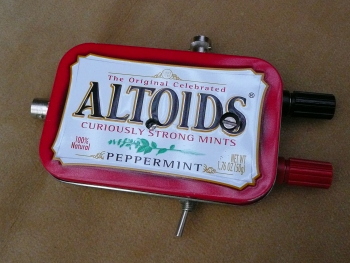
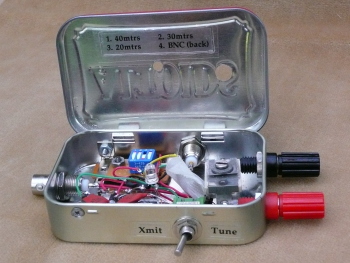
This small tuner will tune end-fed half-wave antennas for 40m, 30m, and 20m. In addition there is a switch to bypass the L-match (toroid and trimmer cap) and output to another BNC. An SWR bridge with LED may be used in all four of the above modes.
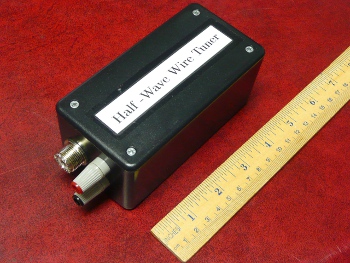

This is a tuner designed to tune half-wave wires, of which the counterpoise can be only .05 wavelength long. It is designed to handle 100w where the Altoids can tuner will only handle about 30w. A separate half-wave wire for each band must be used, but the 40m wire can also be used on 20m. Since end-fed half-wave antennas have approximately the same reactance, only the capacitor is needed to tune.
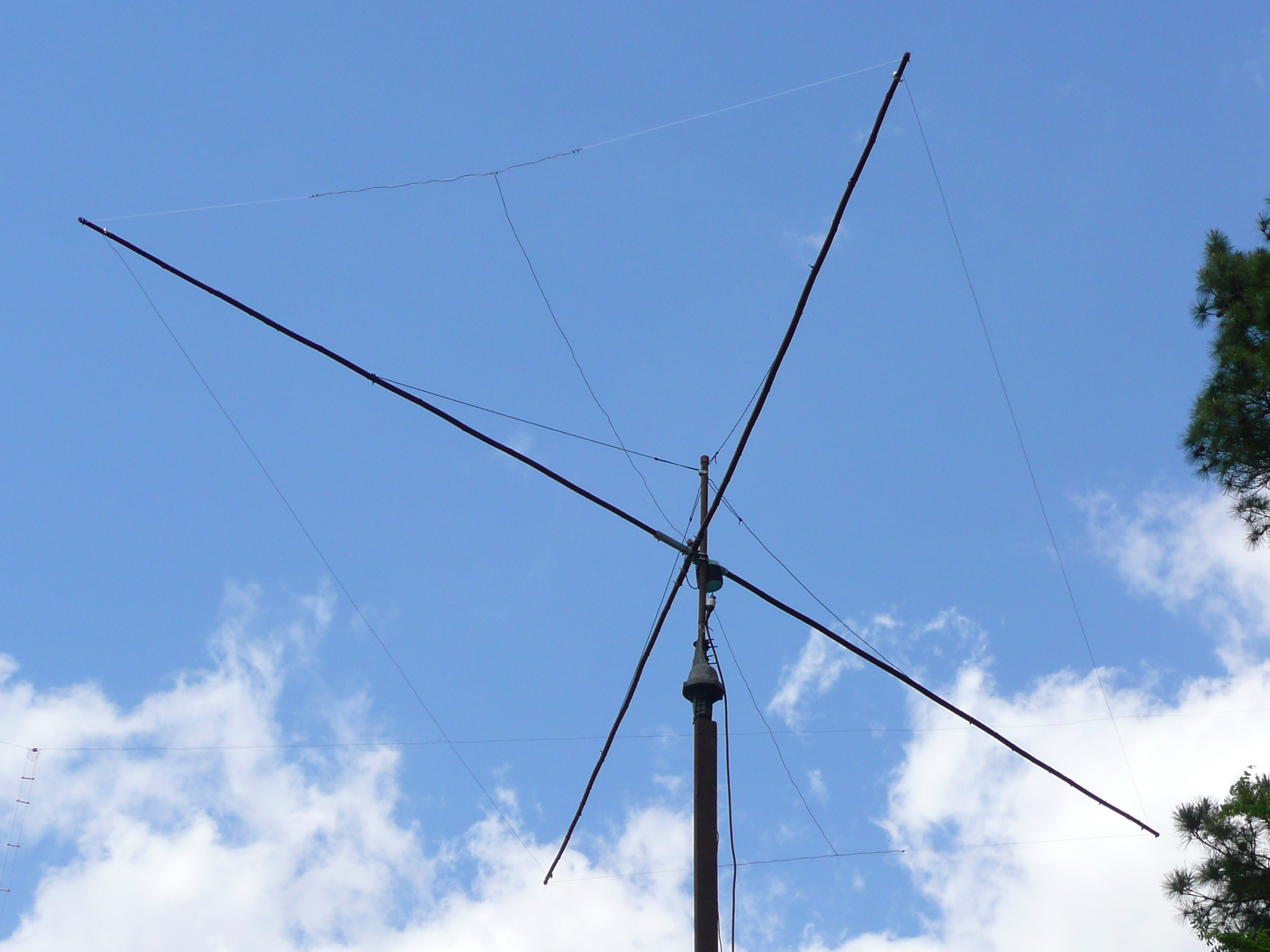
This is the homebrew Mini Horse 3-ele wire beam for 17m. Spreaders are bamboo coated with brown paint for better weather and sun protection. The directory and reflector ends fold back on the spreaders, so the beam is actually smaller than a full-sized 17m beam. On the ends of the driven element is what I refer to as a cap 'T' wire perpendicular to the element. Near the center is a coax wound balun. Click on the picture to get a full-sized version. (Lower left is homebrew open feed for the 80m loop.)
Home